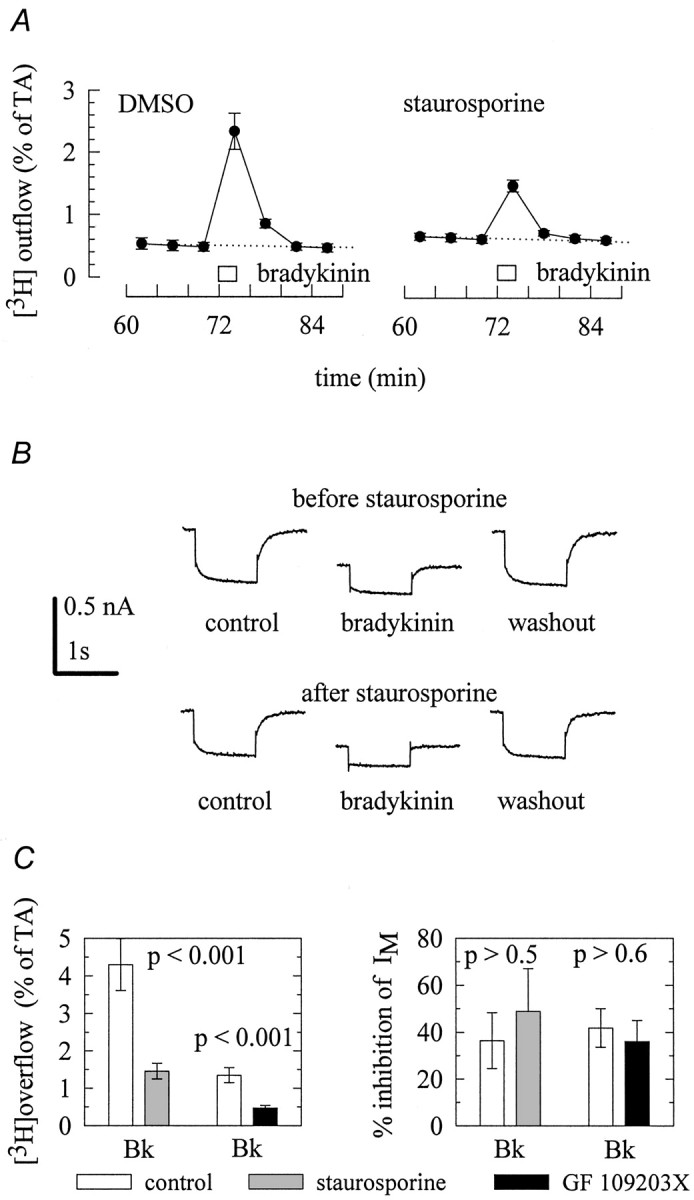Fig. 3.

Protein kinase C is involved in the stimulation of transmitter release but not in the inhibition ofIM. A, Cultures were labeled with [3H]noradrenaline and superfused. From minute 50 on, the buffer contained either 0.3 μm staurosporine or 0.03% DMSO. Subsequent to a 60 min washout period, 4 min fractions of superfusate were collected, and 1 μm bradykinin was present for 2 min, as indicated by the bar. The graphs show the time course of fractional [3H] outflow calculated as percentage of the total radioactivity (% of TA) in the cells; n = 6. B,IM was activated by clamping a neuron at −30 mV and deactivated by applying 1 sec hyperpolarizing voltage steps to −55 mV. The top traces were obtained before (control), during (bradykinin), and after (washout) the application of 1 μm bradykinin. Then, the neuron was superfused with 1 μm staurosporine for 10 min. Thereafter, bradykinin was tested again in the continuing presence of staurosporine, and thebottom traces were obtained before (control), during (bradykinin), and after (washout) the application of the peptide.C summarizes the effects of 0.3 μmstaurosporine or 0.3 μm GF 109203X on bradykinin-induced tritium overflow (left) and inhibition ofIM (right). Both staurosporine and GF 109203X were applied as described above. Results obtained in the presence of these protein kinase C inhibitors are compared with those obtained in their absence. p values for significances of differences between the results obtained with or without staurosporine and GF 109203X, respectively, are indicated above the bars; n = 12 for tritium overflow and 4–5 for the inhibition of IM, respectively.
